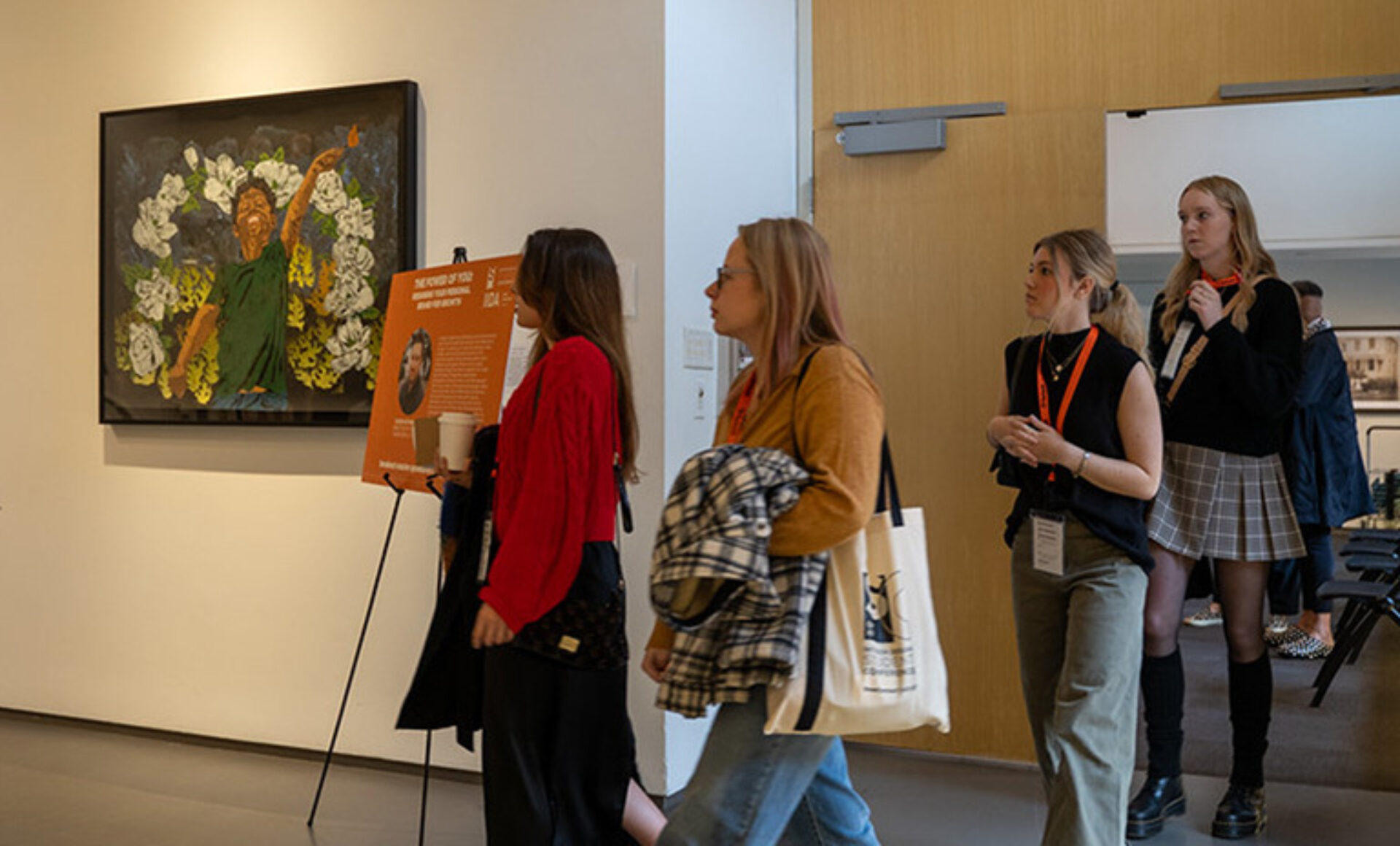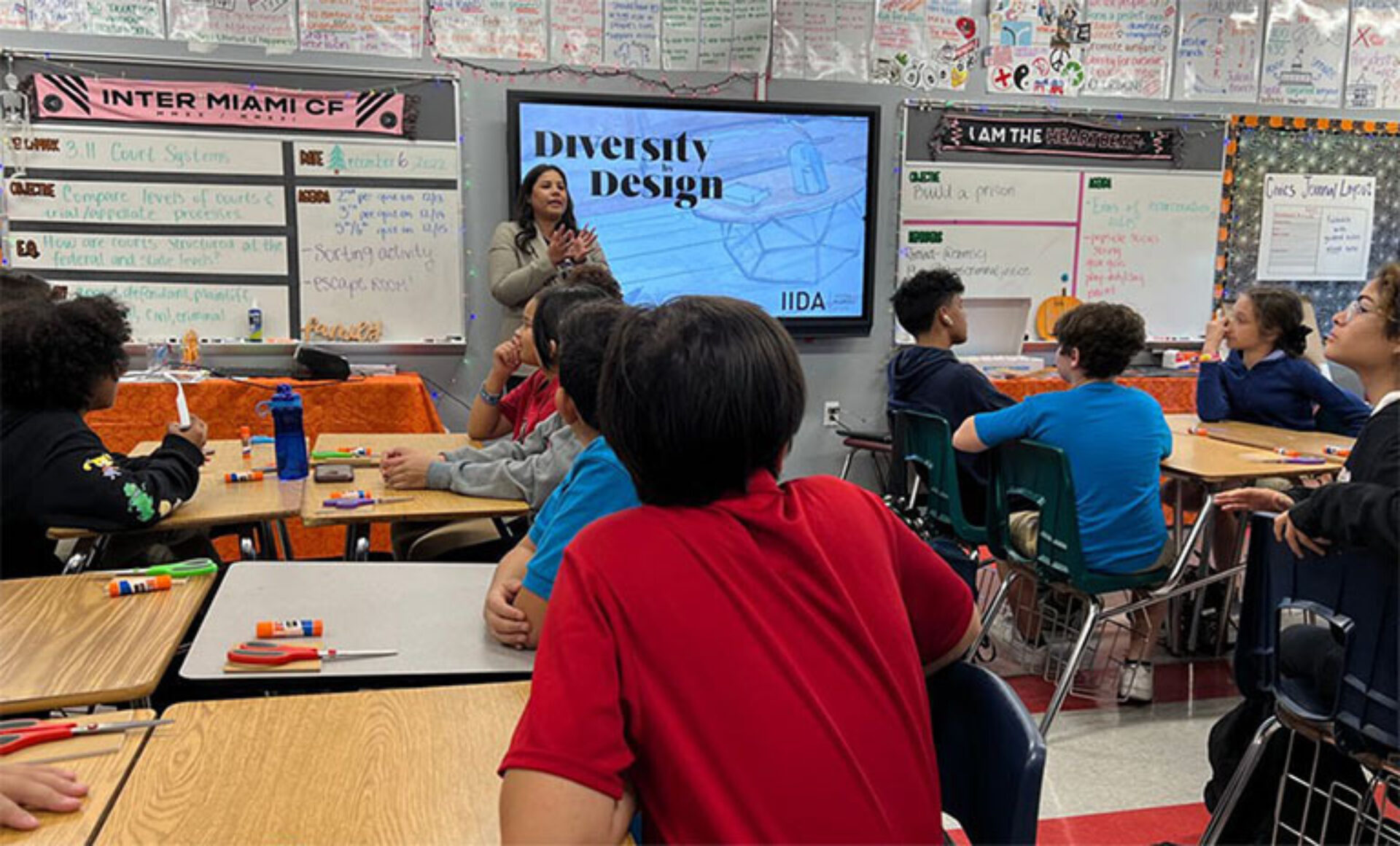As interior designers, while our work shapes the human experience, our impact stretches far beyond. We are making choices and decisions that matter in public health and safety, accessibility, and ultimately have the capacity to impact the climate and our collective futures through the choices we make as individual practitioners, firms, and product designers.
Our IIDA advocacy teams are on the forefront of making change through policy as they work with legislators and like-minded organizations to push the capabilities we have into the future. While this work is most often recognized for securing practice rights and privileges for commercial designers, they also work towards policies that benefit the communities and people that occupy the spaces that we design.
Although some IIDA Chapters are made up of more than one state, California is made up of two: IIDA Northern California and IIDA Southern California. With each chapter having two co-Advocacy VP’s, there is plenty of opportunity to collaborate. In Northern California Adam Newton, Assoc. IIDA, and Laura Taylor, IIDA serve together and in Southern California Gabrielle Mote, IIDA and Nicole Dehlin-Grant, IIDA. To talk about the range of what their chapter works towards, and what it’s like to have double the power, Gabrielle Mote and Laura Taylor weigh in.
How did you get involved with IIDA, and specifically with advocacy work?
Gabrielle Mote: I found IIDA in my freshman year at the University of Idaho, by the time I graduated I had joined as a student member and was president of our school’s professional club. I’ve always been passionate about advocacy, in more ways than one, but in regard to interior design, I always felt like the profession was the misunderstood kid on the playground and it was my job to set the record straight and educate my family, friends, and peers on the specifics and how it differs from architecture. After graduating I knew I wanted to take a step further and ask my local chapter what volunteer positions were open and that’s how I landed in advocacy. I’ve had the pleasure of volunteering in an advocacy role for two chapters, each with a different focus which is enlightening.

Laura Taylor: I was first introduced to legislative advocacy as a student member at Utah State University when the state coalition in Utah was ramping up its successful 2016. My professors were active supporters of that legislative campaign and they encouraged us to pursue NCIDQ certification after graduation. I also experienced frustration with my friends' and family's misconceptions of our work as 'interior designers' as early as my college years. When I moved to San Francisco, I expected California to have more progressive regulation for commercial interior designers and when I found that wasn't the case, I knew I wanted to join in this work.

California has two chapters, how did you begin collaborating and what did it look like before that began?
LT: Our Northern and Southern California chapters were already working together on advocacy initiatives for many years before I got involved. Not only do we share common practice issues and common legislative goals but we know the reality that lawmakers are only going to engage with a group that is already a united front.
GM: I can’t speak to before my time as Co-VP of Advocacy, but I know that in the last few years, it feels as though we’ve been able to accomplish more as a team than in the decade prior.
What are some pros of doing this work with two chapters, and what are some challenges you’ve faced?
GM: By collaborating, we pool our resources which has enabled us to hire an awesome lobbyist, reach a greater number of our members (CA is a big state and would be hard to reach otherwise), and bring more diversity to the table (NorCal and SoCal have distinct cultures). Between the four of us, we have different backgrounds, professional expertise, and years of experience that we can use to connect with legislators and stakeholders.
LT: A major benefit is having double the manpower—we have four VPs of Advocacy who make up our core team! It's been a challenge in the past to balance the responsibility, engagement, and lobbyist funding between our two chapters, but our predecessors' hard work led to a great balanced partnership today. In recent years, both chapters' leadership teams have supported and funded our advocacy work with an inspiring amount of enthusiasm, we are so lucky to have their encouragement and involvement.
GM: Even though our chapters align and work towards a common goal in California, we can have different approaches and timelines that help keep us from burning out or overloading our schedules, as this is a volunteer role. It also helps us to constantly bring fresh ideas to the table. Our biggest challenge has been organizing our resources into a single location for both chapters to pull from and contribute to. We currently utilize Google Drive, but it has taken several years to get to a point where this has been a functional tool. Having two chapters and working through two channels running at different cadences can slow us down at times when we need to gain approval or approach our boards with a hot topic, but thankfully, our boards are very supportive and do what they can to make this easier. We have a monthly call with both chapters’ leadership to align ourselves and make jumping through these hoops easier. Engaging with each other on a regular basis has led to more success and transparency.

Image courtesy of Gabrielle Mote and Laura Taylor

Do you find that your chapters often work together outside of advocacy work? Are there a lot of practice and chapter policy differences between the two?
GM: Advocacy has the most hands-on collaboration, and we’re working to integrate student affairs, professional development, and EDI as well since they are so integrally linked. Finding the balance can be tricky, we don’t want too many cooks in the kitchen, but we also know more knowledge and more expertise is needed.
LT: We feel proud that our advocacy teamwork was sort of a blueprint for other collaborations between the chapters—it expands the reach of our initiatives without requiring that we reinvent the wheel every time. While there are some differences regionally between Northern and Southern California in terms of industry dynamics and values, that's something to expect and celebrate. Our profession is so large and varied across our geographically and economically massive state, but because we agree on our core goals, we are able to tailor our messages and events to our specific membership while maintaining unity.
What is the role of advocacy beyond occupational licensing—how do you see your work further supporting sustainability and environmental policy?
GM: Beyond licensing, advocacy is critical in our everyday lives. As professionals we need to constantly educate the public on our work, why it matters on a personal level, and that interior designers are key players in their communities. We also need to reassure our members that their contributions are valued and help move the needle forward. One way we do this as chapters is by engaging in the political landscape. Together we support bills that relate to housing, sustainability, equity, and other relevant topics to the built environment that show the legislature we care about improving the quality of life in our local communities—we have seen huge success in this opening doors for conversations about our licensing goals which is an added benefit.
LT: The foundation of any advocacy work is the pursuit of empowerment in conjunction with stewardship/responsibility. Spearheaded by Northern California incoming VP of Advocacy Adam Newton, our chapters have jointly supported bills that reflect our core values beginning in 2020. These bills deal with building decarbonization, funding for ADA upgrades, re-zoning, and more. We want our lawmakers to see interior designers as experts and implementers and we want our membership to be engaged in our shared responsibility to our communities. We've been inspired by the AIA's Citizen Architect program and want to foster the same pride in civic engagement among commercial interior designers. This year, we engaged with five bills outside of interior design regulation, our most ever!
Is there anything else that we should know about your work, and what you see as priorities over the next year?
LT: Over the next year, we are seizing on national momentum to build a closer relationship with our architect peers, especially by partnering with firms who champion interdisciplinary design. We'll also continue increasing our engagement in Sacramento thanks to our new lobbyist team, Full Moon Strategies. We want everyone to say "Those interior designers are back again!"
GM: We have made big strides in our networking and position with the state legislature and potential opposition this year, we are hopeful that this will pay off as we plan to introduce legislation in the near future. We could not have done this without both chapters collaborating, it feels amazing to finally see everyone’s hard work pay off. There have been so many people involved in this effort over the years and that’s another thing that’s helpful about collaborating, we get to stagger our terms so the incoming VPs always have someone to learn from and a foundation that has been laid. Now it feels like the walls are up and this structure is taking form, we are excited to see what comes next!
Learn more about the IIDA advocacy work here.






